A fall in the family means I’ve had broken bones on my mind lately. This particular break (my mother’s broken shoulder) is going to need the best medical science has to offer to make it better but in days gone by, people often turned to the garden for a remedy.
One of the plants once considered helpful to repair broken bones was the herb comfrey (Symphytum officinale). Widely known by the name ‘knitbone’ it was thought to assist in helping broken bones knit together. Its genus name Symphytum also refers to bones.
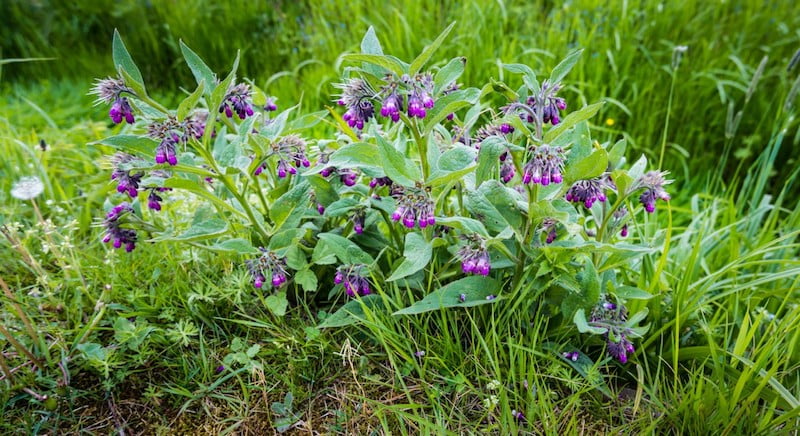
Comfrey growing in a wild corner of the garden
Comfrey leaves were used as a poultice around the damaged area. Bones will knit together given time and immobility but perhaps comfrey assisted. It was also used to help wounds to heal, which has led to another common name of woundheal. Comfrey leaves are also made into creams and used to treat skin disorders.
As this plant grows very quickly and is easy to grow (in fact it spreads by suckers and can become invasive) it was used for many different herbal remedies until it was banned as an internal herbal medicine when it was shown to cause liver toxicity. It has been listed as a poison.
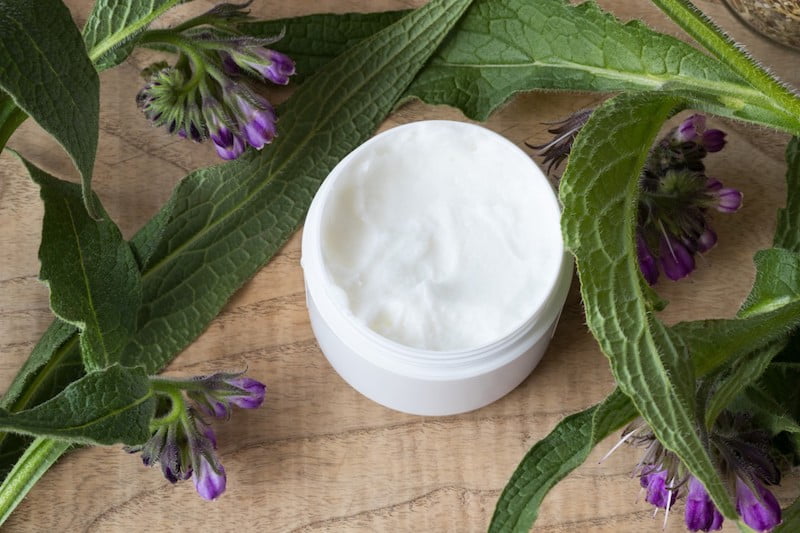
Comfrey is used for topical applications in creams.
While we are more likely to turn to specialist medicines to have broken bones put back together or even replaced, comfrey continues to have beneficial applications within the garden.
Grow your own compost
Comfrey has large, felty green leaves and drooping bell-shaped mauve or white flowers. It grows quickly to around 50-60cm high with lots of leafy growth, which can be gathered to add to compost heaps to provide extra nitrogen for the heap and encourage it to work more efficiently. It is often described as a compost activator as it can help build up the temperature inside a compost heap. It can also be added to piles or bags of deciduous leaves to encourage them to break down into leaf mould.
It is also widely recommended as a fertiliser for organic gardens as it gathers nutrients from deep in the soil, which are then released back into the soil or compost. It is particularly high in potassium, which is valued to encourage flowering and fruiting.
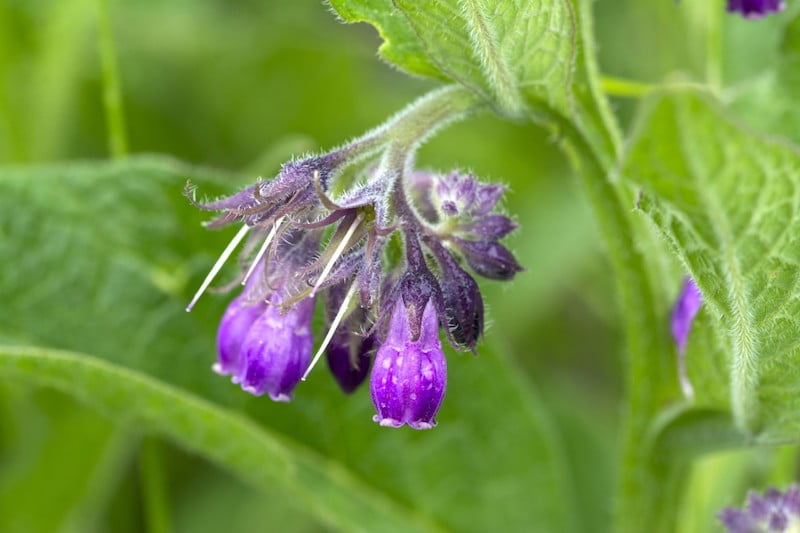
A comfrey flower
The entire plant can be cut back and added to the compost heap or soaked in a bucket of water to produce liquid fertiliser. The liquid produced by steeping chopped or broken comfrey leaves in water for a week or so is very black. It needs to be diluted before it is watered onto the garden or pot plants.
Back in the garden, the root reshoots to sprout and grow again. Comfrey can also be grown from cuttings. It grows best in moist shaded areas and deep soils and struggles in hot or dry spots. Comfrey usually dies down over winter but reshoots in spring.
Friends and relations
Comfrey is part of the large Boraginaceae family. Its relatives includes borage as well as the love it or hate it forget-me-not.
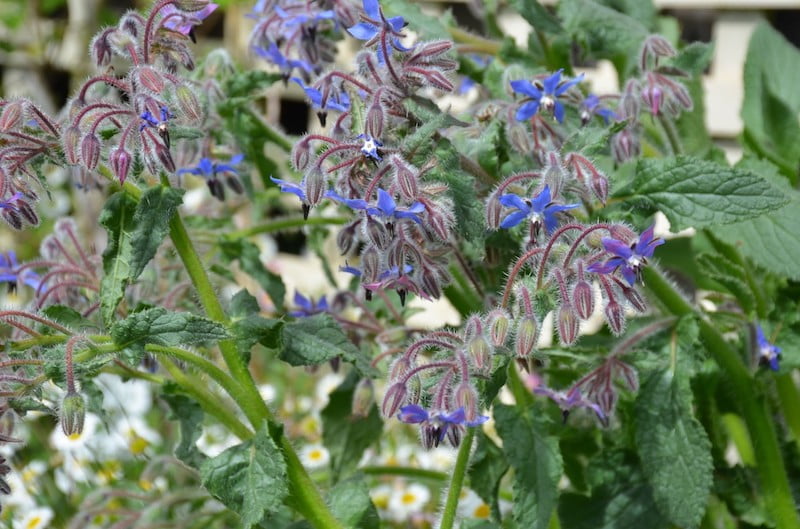
Borage brings bees and insects to the garden. Image, Jennifer Stackhouse
Borage, with its bright blue flowers throughout the year, is a herb to grow for bees and other nectar-loving insects. It is a robust plant with hollow stems and slightly prickly grey green leaves.
Although borage doesn’t sucker, it does spread freely by seed and pops up everywhere. In my garden, in places where it’s not a problem, I leave it to grow and bloom for the insects and for that splash of blue.
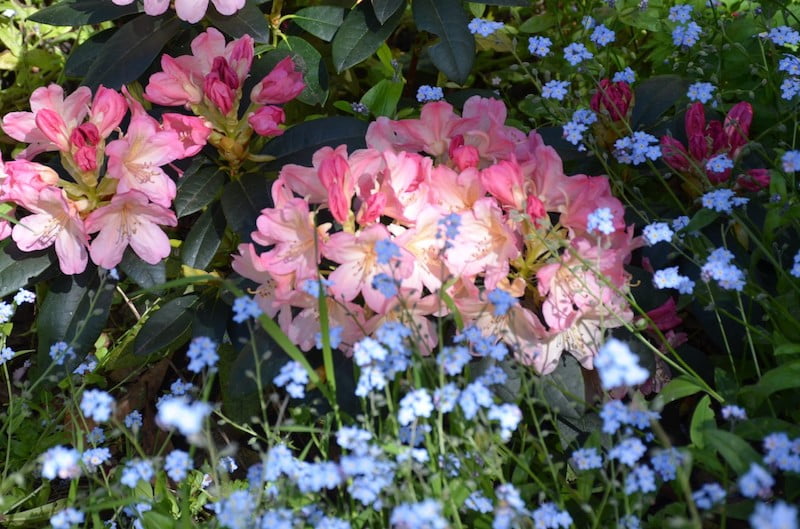
Forget-me-not looks pretty in spring but can spread everywhere. Image, Jennifer Stackhouse
I also leave forget-me-nots as a ground cover and for early flowers for bees and insects but this is one plant to keep a strict eye on as it self-seeds prolifically. The key to managing forget-me-nots is to remove the plants as soon as they start to seed and well before the seeds find their way into everyone’s socks and the pet fur. Well, that’s the plan.
PS No thanks to comfrey, but with a fabulous surgeon and an expensive shoulder replacement, mum’s shoulder is on the mend.
